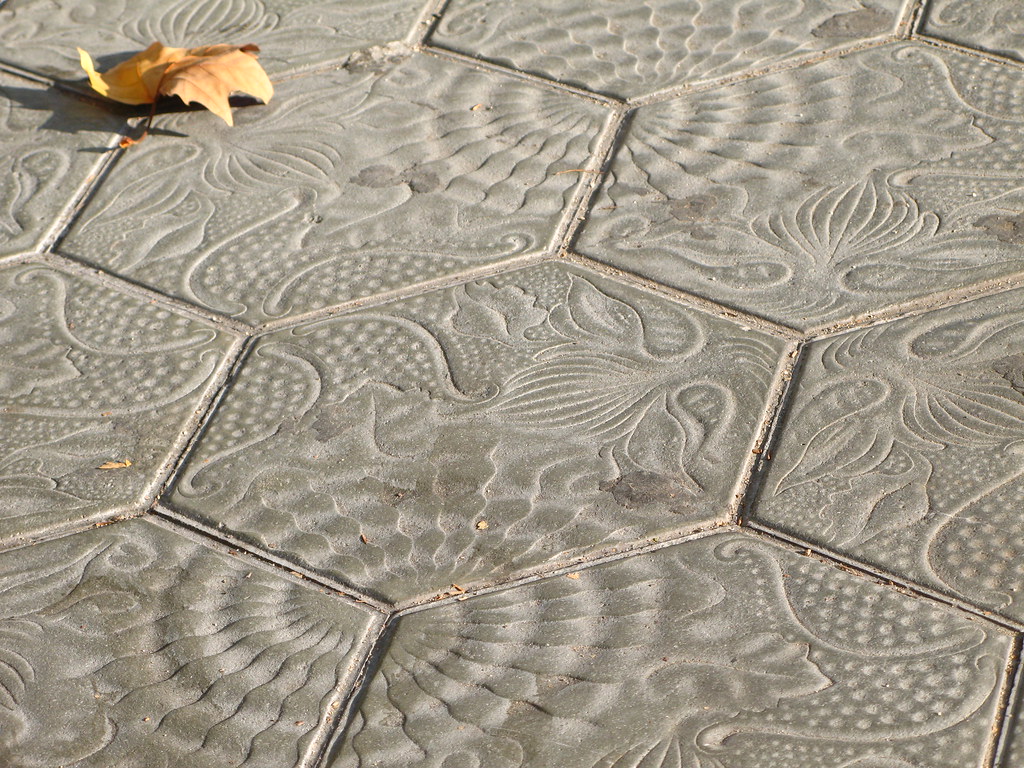Aromatic molecules such as benzene and coronene (shown above) contain a hexagonal arrangement of carbon atoms. This gives a flat planar structure due to the geometry of hexagonal rings which are able to tessellate in two dimensions (see the tessellating tiles in the picture below). You can think of these hexagonal aromatics being like a flat saucers.
A hexagonal arrangement of carbon atoms is the most stable (making grapite the most stable form of carbon, being made up of hexagonal sheets of carbon). The molecule shown below left (benzo(ghi)fluoranthene) would at lower temperatures and over longer times rearrange and form a completely hexagonal structure but in the formation of soot in a flame a faster reaction has been found with acetylene which forms the less stable corannulene molecule with a pentagon trapped within. Integration of this non-hexagonal rings into a hexagonal lattice does not leads to a net that can be nicely tessellated on a 2D surface but leads to a 3D warped structure - a bowl-like geometry. I have embeded an interactive 3D models of these two molecules so you can see this 3D curvature for yourself (click and drag to move the grey models around and zoom with your mouse wheel).
The curvature leads to many interesting physical properties of these molecules such as a permanent dipole moment and interesting electrical properties which might make these molecules useful for organic light emitting diodes or as electrical connections between molecular computers and metal contacts. More to come...






No comments:
Post a Comment